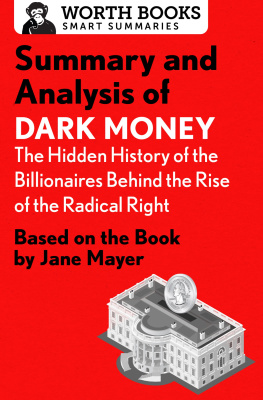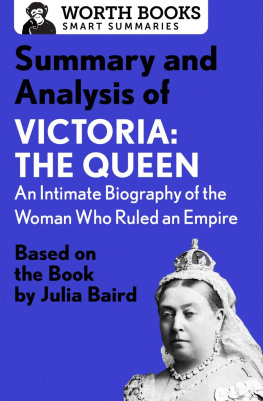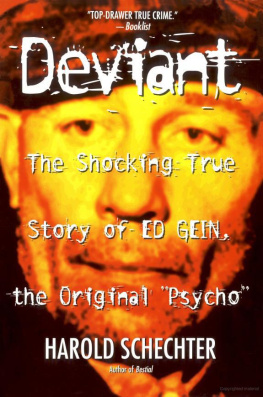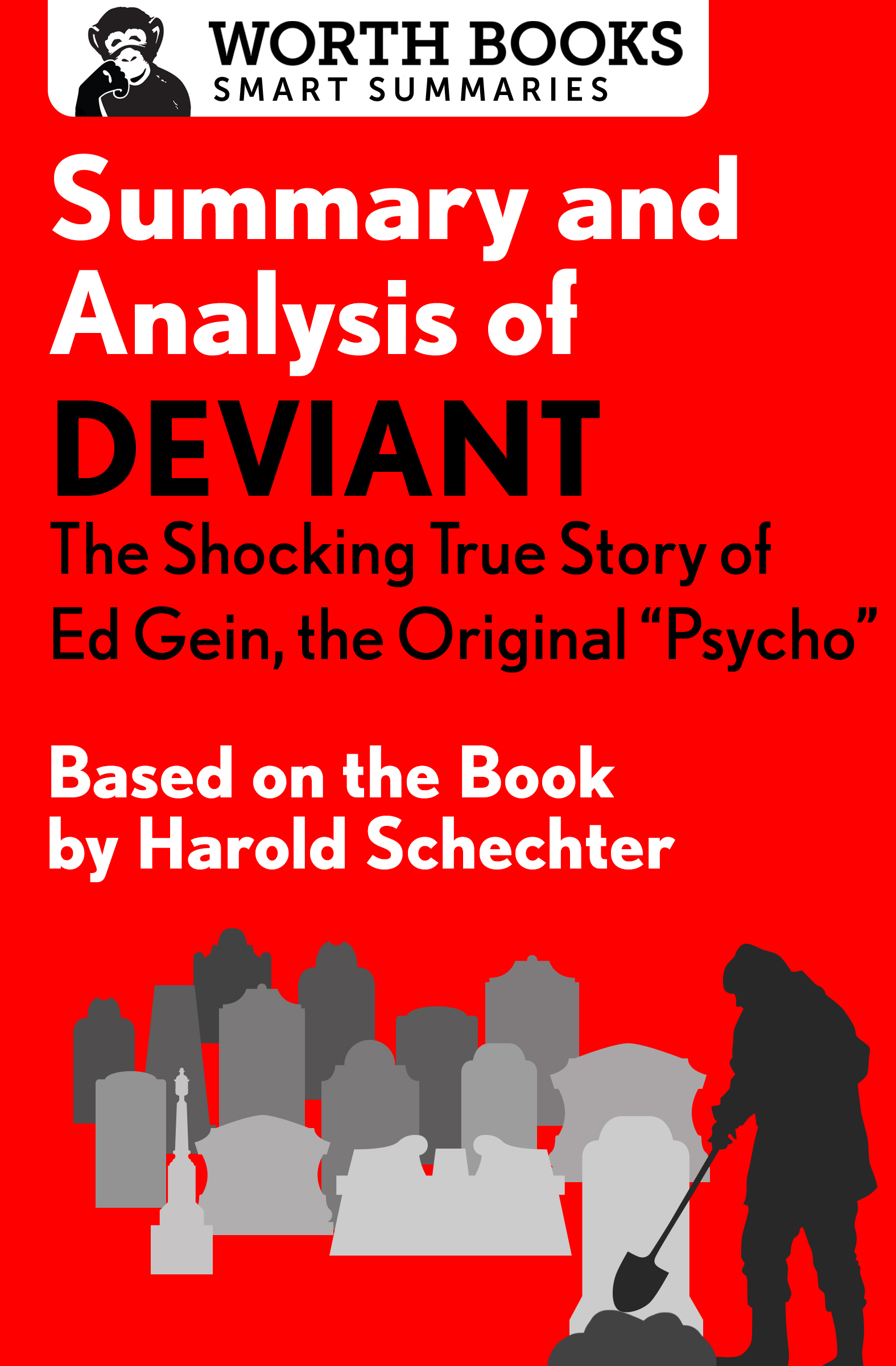Summary and Analysis of
Deviant
The Shocking True Story of Ed Gein, the Original Psycho
Based on the Book by Harold Schechter

Contents
Context
In 1989, when Deviant was first published, the man who inspired Alfred Hitchcocks film Psycho was not at the forefront of the publics consciousness. Ed Gein had already been dead five years, and the precise and horrifying details of his mid-century crimesmurder, grave robbing, corpse mutilation, fashioning masks and even a vest from the skin of female corpseshad been largely forgotten. Viewers of the 1991 film The Silence of the Lambs were likely unaware that the psychopath known as Buffalo Bill who seeks to make a full-body suit from female flesh also contained echoes of Gein.
In his work as a writer and as a professor at City University of New York, serial-killer specialist Harold Schechter has extensively explored the intersection of violence, pop culture, and the social zeitgeist. A prolific chronicler, he is fascinated by the way so-called normal people are drawn to tales of such deviants, compelled to dissect their acts and motives as thoroughly as Gein might have dissected a body. The authors work delves into the way these psychologically aberrant acts become part of folkloreand how every generation finds a pop-culture monster upon which to hang the blame, unwilling to accept that this darkness might be part of the human psyche itself.
Schechter wrote Deviant during the Satanic Panic of the 1980s, in which child-care workers were accused of abusing children during Satanic rituals. He points out that at least one amateur sociologist attributed Geins crimes to the pernicious influence of true-crime magazines. Today, he might observe parallels to the way heavy metal music was said to have corrupted the later-exonerated West Memphis Three; how Marilyn Manson was blamed for 1999s Columbine High School shooting; or how video games are linked to violent crimes. Deviant , then, is not only a character study of a man who committed some of the most unthinkable crimes known to human society, but a portrait of the mid-twentieth-century American culture that both reviled and, on some level, exalted him.
Overview
In the middle of the twentieth century, the Midwest was usually perceived as an idyllic slice of America. But in the small, hardscrabble farm town of Plainfield, Wisconsin, one man was committing crimes that were unimaginably depraved.
His name was Ed Gein. He had grown up with a domineering, fanatically religious mother, Augusta Gein, who instilled in him the belief that women were wicked and sinful. Physical contact with themparticularly outside marriagewas filthy and immoral. Paradoxically, Ed both revered his mother as a paradigm of virtue and resented her ironclad grip on his life. If the idea of a murderer fixated on his mother sounds familiar, its because Ed Gein inspired the novel Psycho, immortalized in Alfred Hitchcocks movie of the same name.
After Augustas death, Geins psychological problems flared out of control. He murdered two locals, both middle-aged businesswomen like his mother. He dug up the corpses of other middle-aged women and fashioned garments and furniture coverings from their skin. Speculation persists that he may be responsible for a string of murder and missing persons cases, including the death of his brother. Understandably, when he was committed to a mental institution rather than facing trial for his crimes, his former neighbors were outraged.
One of the central questions posed by Deviant and by the people of 1950s Plainfieldis how a monster could go on committing such crimes in such a small town, where neighbors know one anothers business intimately. Though Schechter never posits an answer, its possible that Gein was able to hide his crimes in plain sight simply because they were so unthinkable.
And yet, once uncovered, Geins dark secrets seemed to resonate in the popular psyche. Deviant is also the story of how Gein went from an isolated nobody in a small farm town to a national celebrityeven a figure of mythic proportions. Geins story was quickly woven into the fabric of American folklore. Perhaps 1950s America wasnt such a bastion of wholesomeness after all.
Summary
Prologue
Alfred Hitchcocks classic film Psycho is an iconic depiction of horror in human formand an unsettling reminder that true monsters are not the stuff of fairy tales. So it was with Edward Gein, the subject of Deviant.
Need to Know: Norman Bates, the infamous antihero of Robert Blochs novel, and, later, Hitchcocks movie Psycho, was loosely based on the lurid saga of serial killer Ed Gein. Deviant tells his trueand even more terrifyingstory.
Part 1: Bloodlines
The town of Plainfield, Wisconsin, would hardly be considered a hotbed of crime. Located in the states barren and sparsely populated northern plains regiona stark contrast to the green and thriving center of Americas dairy landPlainfields population historically consisted of farming families barely eking out enough crops to sustain themselves. Yet they were a close community, with a good quality of life.
There was one black mark in the towns history books, however: In 1853, shortly after Plainfield was foundedand half a century before Ed Gein was borna man fatally shot his neighbor over a land dispute. Soon afterward, his killer was hanged by a lynch mob. Before Gein, the incident struck locals as an anomaly.
Need to Know: A small and impoverished community, but safe and close-knit, Plainfield in the mid-twentieth century unwittingly harbored a monster.
George Gein, who would become Ed Geins father, was three years old when he lost his parents and older sister to a flood. Raised by grandparents, he grew up to become an alcoholic and a drifter. After landing in La Crosse, Wisconsin, he entered into a miserable marriage with Geins mother, Augusta, a devout Lutheran. She was unrelenting in her judgment of others moral failuresparticularly those of her hard-drinking husband, whom she dominated and berated. In turn, Augusta endured sporadic beatings at Georges hands. (It is worth noting that Schechter chalks up these episodes of physical abuse to George los[ing] control after an especially vicious tongue-lashing, as if to place the blame on his wife.)
Although the household dynamic was hardly a happy one, and Augusta thought of sex as inherently dirty and sinful, she endured physical relations with her husband in order to fulfill her dream of motherhood. After her son Henrys birth, she steered her rudderless husband into taking on ownership of a meat and grocery shop, and soon was running the operation herself.
Despite her grim marriage, Augusta decided to conceive another child in hopes of having a girl. Edwards arrival in 1906 was a crushing disappointment.
Need to Know: Ed Geins family legacy was one of hardship and heartbreak. His mothers worldview became progressively darker throughout her loveless marriage. When God failed to answer her prayers for a daughter, she resolved to keep young Edward free of the moral failings of the male sex.
It would be a gross understatement to say that Ed Geins relationship with his mother was complicated. Growing up, he internalized her image of herself as a moral compass, a model of perfection in an immoral and imperfect worldthe world in which his father dwelled. It was an image Ed would cling to his whole life.
Augustas wrath figured prominently in formative incidents in Eds childhood, incidents for which he blamed himself: falling down the stairs; losing money shed given him. Yet there was an even darker mental imprint that would figure in his crimes: The time young Ed peeked into his parents slaughterhouse and witnessed his blood-spattered mother deftly eviscerating a dead, strung-up pig as her husband held it steady.










